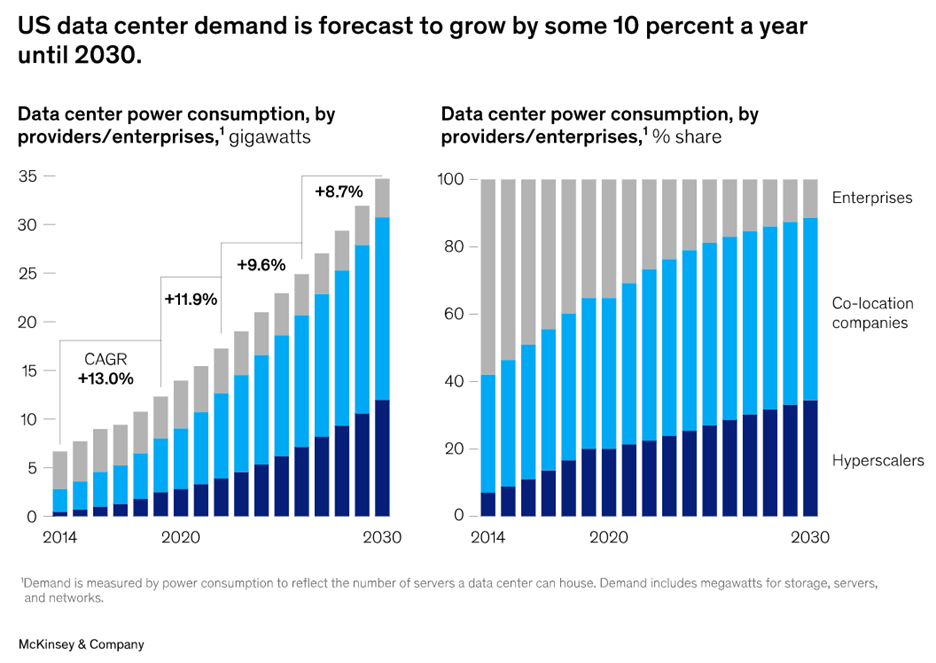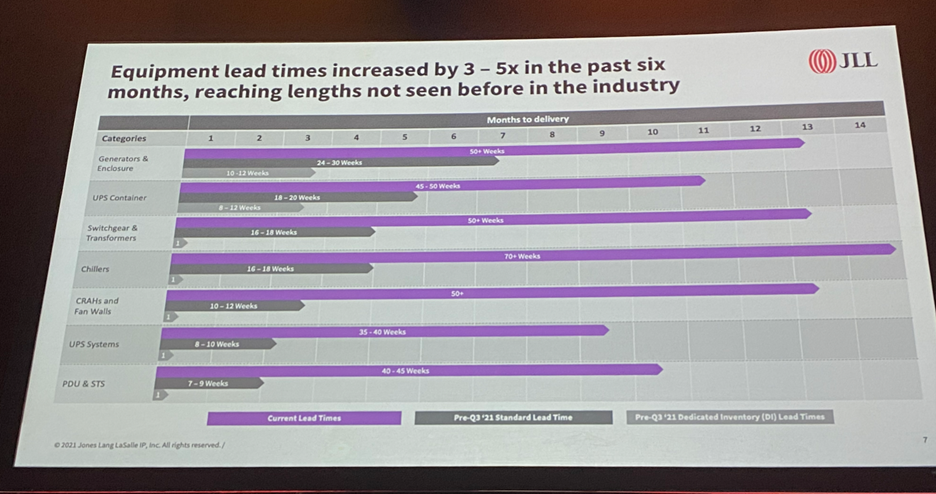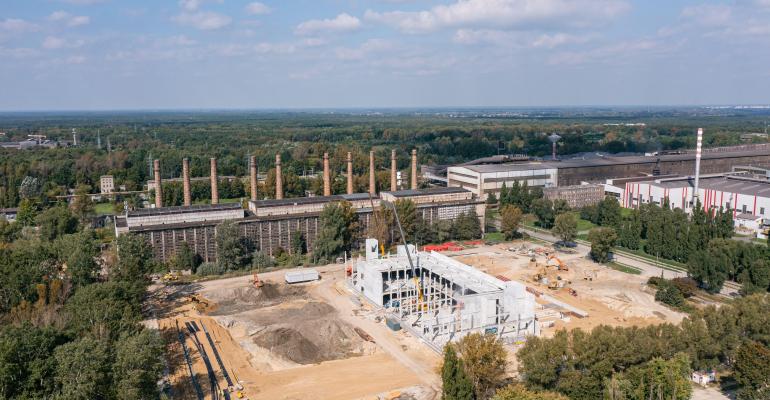These last three years have been a masterclass in better understanding data center supply, demand, and construction challenges. A pandemic threw everything for a loop as demand for connected infrastructure skyrocketed, and that demand hasn't slowed down. In a recent post here on DCK, we learned that in the U.S. market alone, demand—measured by power consumption to reflect the number of servers a data center can house—is expected to reach 35 gigawatts (GW) by 2030, up from 17 GW in 2022, according to McKinsey analysis (see image below). The United States accounts for roughly 40% of the global market.

Even still, we're having trouble keeping up. In a recent DataCenterHawk report, we saw the North American primary market vacancy now averaging 4.4%, its lowest point ever. In Northern Virginia, that vacancy rate is closer to 1%, and this is the first time the average dropped below 5%. While a few markets with decent capacity are available to meet the demand, most are supply constrained, with data center operators looking at ways to increase.
“Demand for cloud services and digital infrastructure has skyrocketed over the last 5 years which has driven additional demand for colocation,” said Alan Howard, principal analyst at Omdia. “A simple example of this cascading demand is Digital Realty Trust. At the end of 2018 they had 1.7 million sq. ft of base building capacity under construction, then 2.9 million in 2019, 2.3 million in 2020, 3.3 million in 2021, and recently reported 3.9 million sq. ft of base building capacity under construction at the end of 2022.”
It's easier said than done. We are still reeling from severe supply chain constraints, and essential, critical material is still a challenge to get. In late September 2022, I attended a conference in Austin where JLL discussed the equipment lead times.

Here's what this chart reads:
- Generators and enclosures are a 50+ week wait, and this is compared to 10-12 weeks pre-Q3 2021.
- UPS containers are a 45-50 week wait. Compared to 8-12 weeks pre-Q3 2021.
- Chillers could cost you a wait of 70+ weeks compared to a week or less when working with dedicated inventory lead times. Even a standard lead time would be 16-18 weeks.
Between September and now, there has been some good news. Lead times are getting lower, but you're still waiting two to three times longer than you would have in the past.
With this in mind, let's pivot to the data center architect, builder, and operator. Data center construction is a hot topic mainly because of the creativity we've seen in leading organizations bringing infrastructure to market faster. Let's explore that for a minute.
Data Center Construction Creativity
I'm lucky enough to have seen some of the best data center builders and architects work their magic. I've also learned that there is no silver bullet when it comes to data center construction and speed-to-market. Here are some of the ways we've seen leaders be creative:
- Changes in deployment sizing. From the conversations that I've had, leaders are much more careful in how they deploy infrastructure once the land is purchased. Modular designs, like Lego pieces, are far more effective in bringing infrastructure online that will be used immediately.
- Rethinking land banking, site identification, and land planning. Acquiring land for data center use has evolved quite a bit, and there are now challenges with regulating bodies, government agencies, and even entire communities. Some that look into land banking will even do costly environmental studies before signing any paperwork.
- Working more closely with permitting bodies. Leading data center organizations have taken the time to understand local municipalities and governing bodies. Many have had to work much more closely with local and regional government offices to bring infrastructure online faster.
- Prefabrication and modular infrastructure. Working with prefabricated infrastructure is a quickly growing tactic to bring capacity online faster and more economically. In a recent DCK post, we saw how prefabricated modular design cuts construction times, reduces costs, and improves safety, quality, and sustainability since more work occurs in controlled manufacturing settings. One company recently cut the cost of building a 45-MW facility in Europe by 20% and slashed construction time to 11 months (from 17) by using prefabricated components for the building and modularized components for the electrical and cooling systems.
- Standardization and last-mile fabrication. It's not uncommon for hyperscale and colocation leaders to now partner with manufacturing leaders who will either build or have factories very close to the location of the data center campus or provide localized staging and distribution of pre-purchased dedicated inventory for JIT delivery.
- Simplification of infrastructure. Past data center infrastructure would over-build and often over-provision. Modern designs are laser-focused on the efficiency of design. Leaders are working to lessen the number of materials used and lower the time and labor required to bring up a facility.
- Using more data and intelligent systems for design and modeling. Many colocation and hyperscale leaders are turning to models, data sciences, and 4D techniques to create detailed Bill of Materials (BOM) and Bill of Quantities (BOQ). These data-driven technologies can help reduce time to market and wasted time and resources.
Aside from the creativity we see in construction, it's essential to hear from leaders in the data center industry on how they're bringing up new facilities. "I'm excited to discuss how leaders in this industry are designing and bringing new critical infrastructure to life," says Chris Crosby, CEO of Compass Data Centers and Keynote Speaker for Data Center World BUILD 2023.
This year at Data Center World in Austin, we're holding a special Data Center BUILD summit. For those just hearing about this, Data Center BUILD is a two-day construction and design summit that will bring together operators, decision-makers, experts, and implementers to help you drive intelligent decisions for data center growth. If you haven't registered, be sure to do so, we'll be covering the latest tactics, and strategies leaders use to speed up time-to-market for data center facilities.
"We operate mission-critical facilities and are being asked to bring more capacity online faster than ever before," added Crosby. "With this comes responsibility from owners and operators, construction companies, design, and engineering firms to ensure they are constructing facilities with the best practices possible. And yes, often that means getting creative."
The Future of Data Center Construction Is Fascinating
I've enjoyed conversing with civil engineers and other data center construction professionals as they discuss how bringing critical facilities has evolved. Looking ahead, data center construction will be experiencing some exciting times. Just consider this. We may soon design data centers for nuclear power and small modular reactors. The latest update from the U.S. Nuclear Regulatory Commission (NRC) staff is that they have completed the safety review of the NuScale small modular reactor (SMR) design certification application. The NuScale SMR is an integral pressurized-water reactor based on Multi-Application Small Light Water Reactor developed at Oregon State University in the early 2000s. Having received regulatory approval, NuScale can soon design SMRs to power data centers.
Nuclear reactors aside, we'll see new construction materials be utilized, better ways to manage large projects, and the continued demand to bring new infrastructure online faster. It truly is a fascinating time to be in data center construction. And, honestly, the digital infrastructure industry in general.





